- Getting ready to hit the road!
- Some thoughts on Hong Kong…
- A day in Danang and Hue, Vietnam
- Saigon River and Saigon, Vietnam
- Siem Reap and Temples, Cambodia
- The Floating Village — Kompong Phluk, Cambodia
- Phnom Penh and the road to Sihanoukville, Cambodia
- Bangkok, Thailand
- Day 2 in Bangkok — Ayutthaya, Thailand
- Singapore
- Langkawi Island, Malaysia
- Phuket, Thailand — or sort of…
- New Delhi, India
- Agra and the Taj Mahal
- The road to — and Jaipur, India
- India — a few closing thoughts.
- Dubai, United Arab Emirates
- Oman (The Sultanate of)
- Luxor, Karnak, and the Valley of the Kings, Egypt
- Petra, Jordan
- Sharm el Sheik and St. Catherine’s Monastery, Egypt
- Cairo and Giza, Egypt
- Egypt — Some final thoughts…
- Zooming around Israel
- Bodrum, Kusadasi, and Ephesus, Turkey
- Corfu, Greece
- Dubrovnik and Zadar, Croatia
- Venice, Italy — the last hurrah!
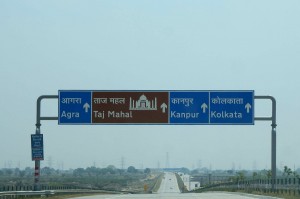
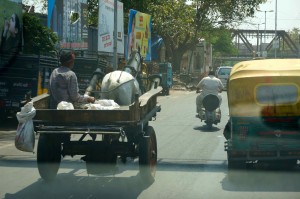
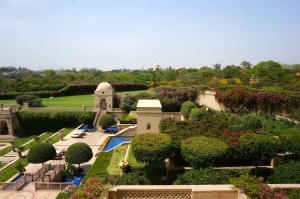
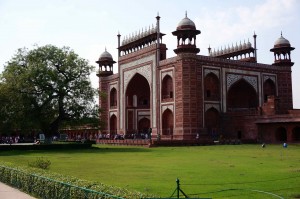

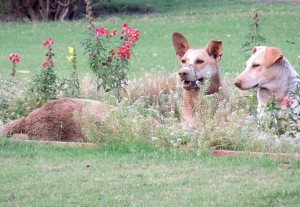
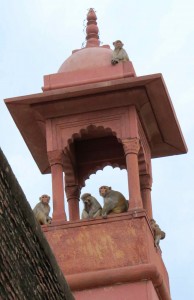
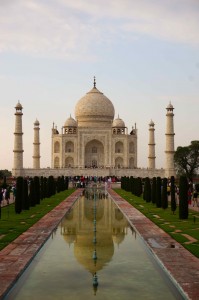 The iconic Taj shot — evening version
The iconic Taj shot — evening version
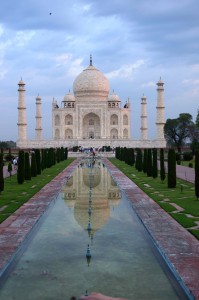
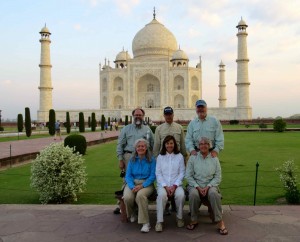
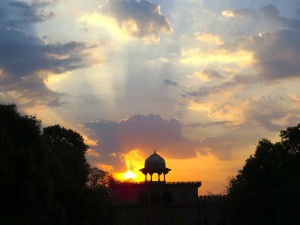
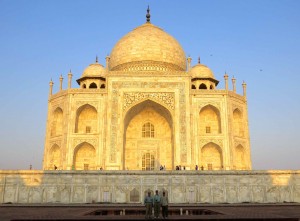
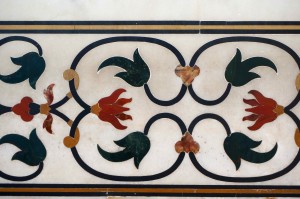
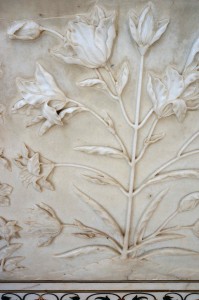
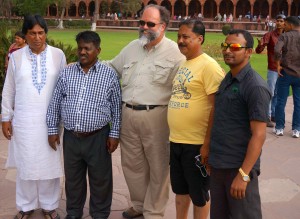
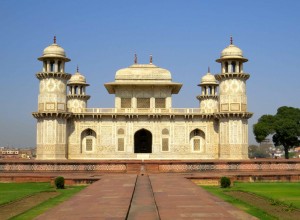
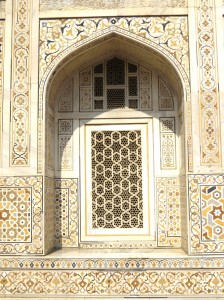
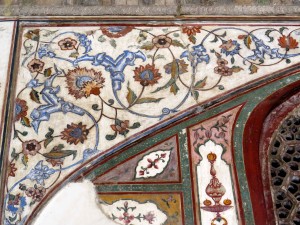
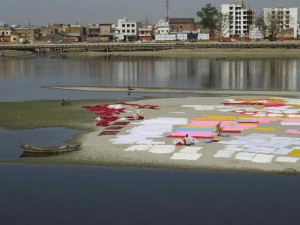
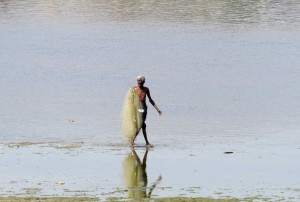
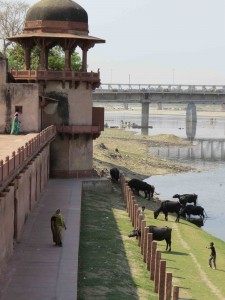
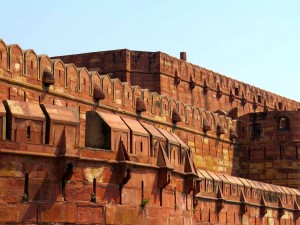
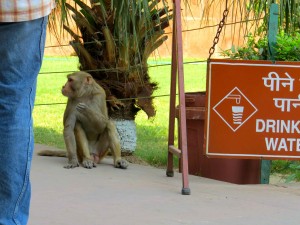
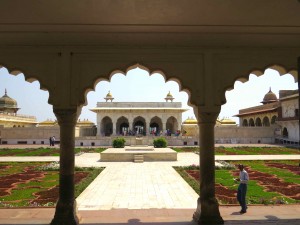
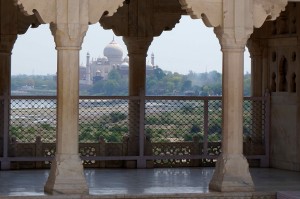
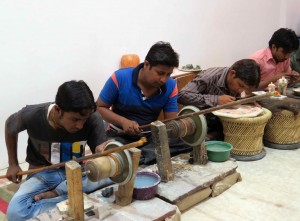
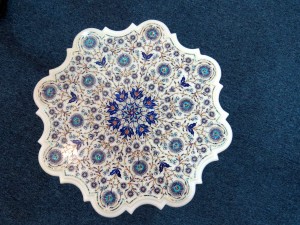
After a thoroughly enjoyable time in Delhi, we got in our van with our trusty driver, Suresh, and made the 4-hour drive to Agra – a small city in the north Indian state of Uttar Pradesh traditionally known primarily for the Taj Mahal (although they have two other UNESCO World Heritage Sites as well). I say “traditionally,” because Agra (and, in fact, the whole 200 km between Delhi and Agra) is starting to be developed. Land and homes are still reasonably priced and speculation is going rampant. One example is Sport City that is this giant tract of undeveloped land that has had a modern private toll road constructed through it, as well as a world-class Formula One Grand Prix racing circuit that will be the anchor for development. Clearly, lots of money is coming into the region.
While it was the capital of the Mughal Empire for over 100 years, Agra today is quite poor and unattractive. The poverty is more noticeable here and the city is dirty and quite polluted (water and air). Having said that, the area around the Taj contains all the resort hotels and, once you get into the compounds, it is a completely different world. We had a wonderful view of the Taj from our hotel (including our room) and the recommended thing is to visit it both for sunset and sunrise. I was a little skeptical of that, but it turns out that the marble of the Taj looks quite different under varying lighting conditions. I won’t give you a lot of detail about the architecture but suffice it to say, this was an engineering and building marvel. Building on the banks of Yamuna River, the ground wasn’t stable enough to hold a building of this size and weight. The amount of engineering that went into building the footings and the plinth was amazing and just that portion took 12 years to complete. The decoration of the Taj is also incredible, starting with the very dense white marble used to surface the mausoleum to the amazing carving and inlays made from nearly 30 types of semi-precious stones. Materials and workers came from several countries around the region and the complex took over 20 years to complete.
While everyone is in awe of the Taj Mahal as an architectural gem and a world heritage site, they often miss its underlying message. You see, the Taj Mahal is a love story – a heart-broken emperor (Shah Jahan) who builds an exquisite tomb as a monument to a wife (his third, and favorite) who died in childbirth of their 14th child! But it is also a story of treachery – an ambitious son (who is not even the direct successor) who imprisons his father in the Agra Fort (don’t feel too bad for him – wait until you hear about his “prison”) and takes over power for himself.
In addition to the Taj Mahal, we also visited the other two World Heritage sites (the Agra Fort and the Itmad-Ud-Daulah). The Agra Fort is a huge complex (around 94 acres) that has been around at least since the 11th century. At one point, there were up to 500 buildings in the complex, many of which were destroyed by the British to make room for barracks. Today, only around 50 of the buildings remain. While originally all brick, it was later surfaced in sandstone as well. There are lots of twists and turns and hills as you move through the buildings. These, along with the moat/drawbridge were designed as an impediment against attacks using elephants. They even had places to roll big boulders and pour hot oil on potential attackers! This was where Shah Jahan was imprisoned for his final years. But don’t feel too bad – he had a beautiful marble palace within the fort – complete with his harem and eldest daughter to take care of him. It was quite grand!
The Itmad-Ud-Daulah is a mausoleum built for a man named Ghiyas Beg who ultimately became the “pillar of the state” to Emperor Jahangir (son of Emperor Akbar). While yet another mausoleum to see, what made this one interesting was who had it built, where it was built, and what it influenced. It was built by Ghiyas Beg’s daughter, who ultimately married the emperor. She had huge sway over her husband and his court. Typically, a representative of an emperor would not rate a grand tomb but, in this case, Beg’s daughter decided to undertake this project for her father, who had started out as a poor merchant. But the daughter was smart – she kept the mausoleum complex small and out of the sight of the emperor (across the river and upstream of Agra Fort). The tomb itself was made of white marble with lots of decoration. It is said that this design influenced Shah Jahan in the design of the Taj Mahal.
We finished our tour with a visit to a workshop that is continuing the art of inlay. Many of the employees are descendants of the original craftsmen that worked on the Taj. The work is staggering — microscopic pieces of semi-precious stones being ground with a hand-turned wheel being laid into marble that has been chipped out with hand tools. The work is extremely delicate and pieces often take more than a year (with multiple workers) to complete. Simply amazing!
Anyway, we saw a lot, took refuge in the hotel pool against the heat, and enjoyed the hospitality before moving on!
This entry was posted in India, Travel

